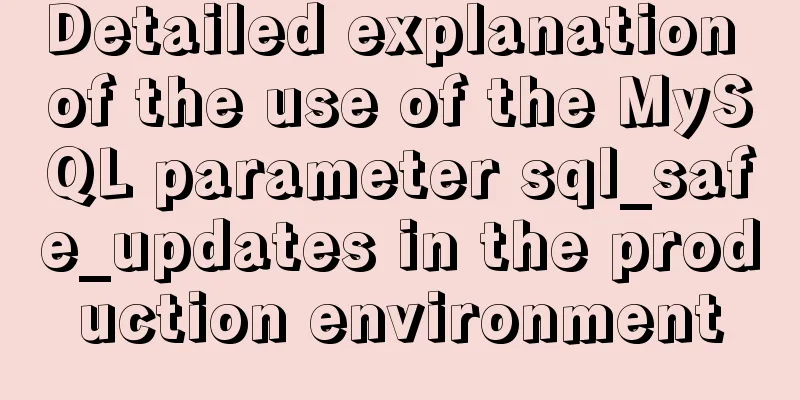How to run py files directly in linux

|
1. First create the file (cd to the directory where it needs to be placed) touch myTest.py 2. Edit myTest.py vi myTest.py Add content inside #! /usr/bin/env python Then add the code you need to add print('hello, world!') Then enter command mode, :wq save and exit vi 3. Change the permissions of myTest.py as needed. This is mainly used for testing, so do not set it to 777 chmod 777 myTest.py 4. This is to run myTest.py directly in the current directory (similar to directly executing exe in windows) ./myTest.py The above method of directly running py files in Linux is all the content that the editor shares with you. I hope it can give you a reference. I also hope that you will support 123WORDPRESS.COM. You may also be interested in:
|
<<: Detailed explanation of JS ES6 coding standards
>>: Why do select @@session.tx_read_only appear in DB in large quantities?
Recommend
Explain MySQL's binlog log and how to use binlog log to recover data
As we all know, binlog logs are very important fo...
How to set remote access permissions in MySQL 8.0
The previous article explained how to reset the M...
Introduction and use of Javascript generator
What is a generator? A generator is some code tha...
Solve the problem of ifconfig being unavailable in docker
Recently, when I was learning docker, I found tha...
What is Software 404 and 404 Error and what is the difference between them
First of all, what is 404 and soft 404? 404: Simpl...
Usage of if judgment in HTML
In the process of Django web development, when wr...
HTML+CSS+JavaScript to achieve list loop scrolling example code
Description: Set a timer to replace the content of...
Vue implements small form validation function
This article example shares the specific code of ...
Tutorial diagram of building a Hadoop high-availability cluster based on ZooKeeper
Table of contents 1. Introduction to High Availab...
mysql charset=utf8 do you really understand what it means
1. Let's look at a table creation statement f...
Solution to large line spacing (5 pixels more in IE)
Copy code The code is as follows: li {width:300px...
MySQL database must know sql statements (enhanced version)
This is an enhanced version. The questions and SQ...
Detailed explanation of docker visualization graphics tool portainer
Table of contents 1. Introduction to Portainer 2....
Detailed explanation of nginx upstream configuration and function
Configuration Example upstream backend { server b...
Detailed explanation of MySQL event modification events (ALTER EVENT), disabling events (DISABLE), enabling events (ENABLE), event renaming and database event migration operations
This article uses examples to describe the operat...









